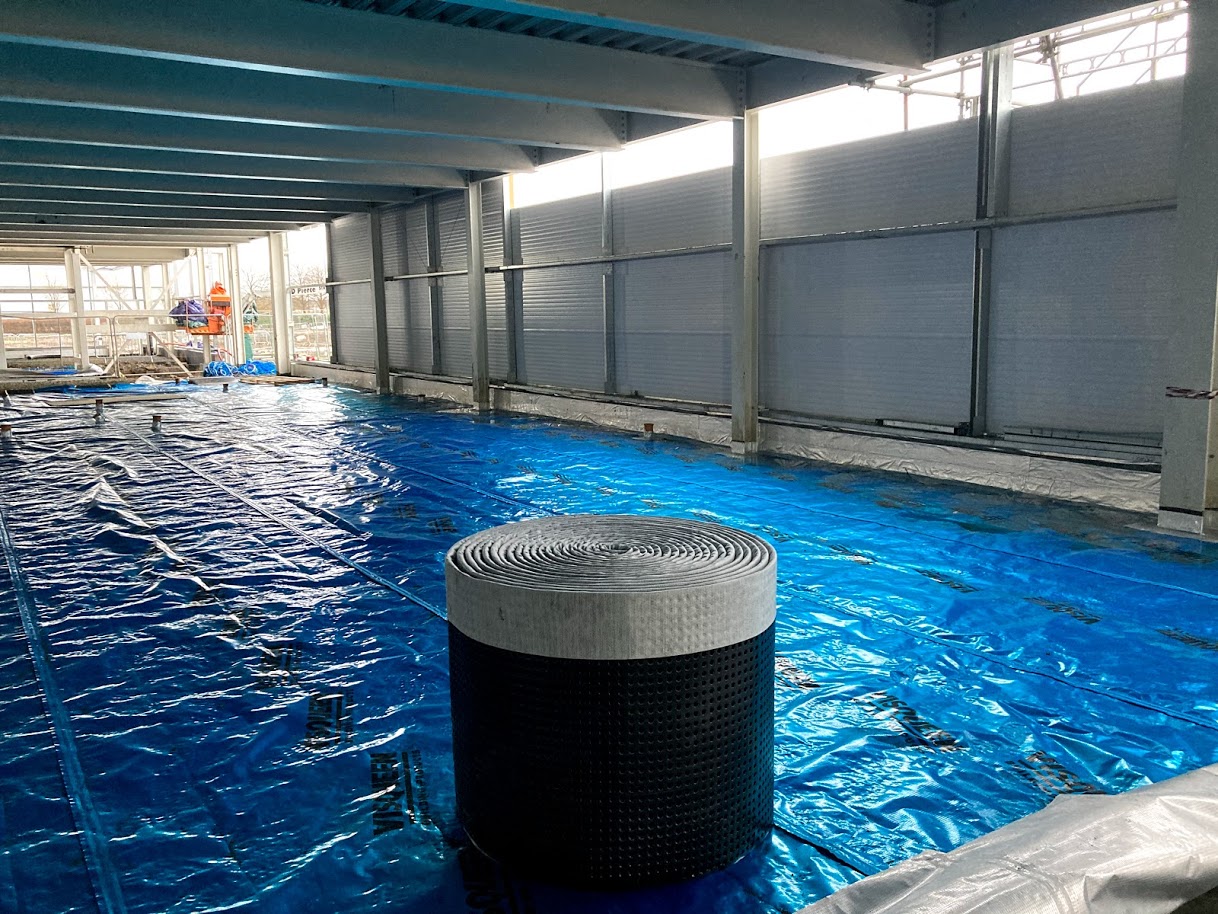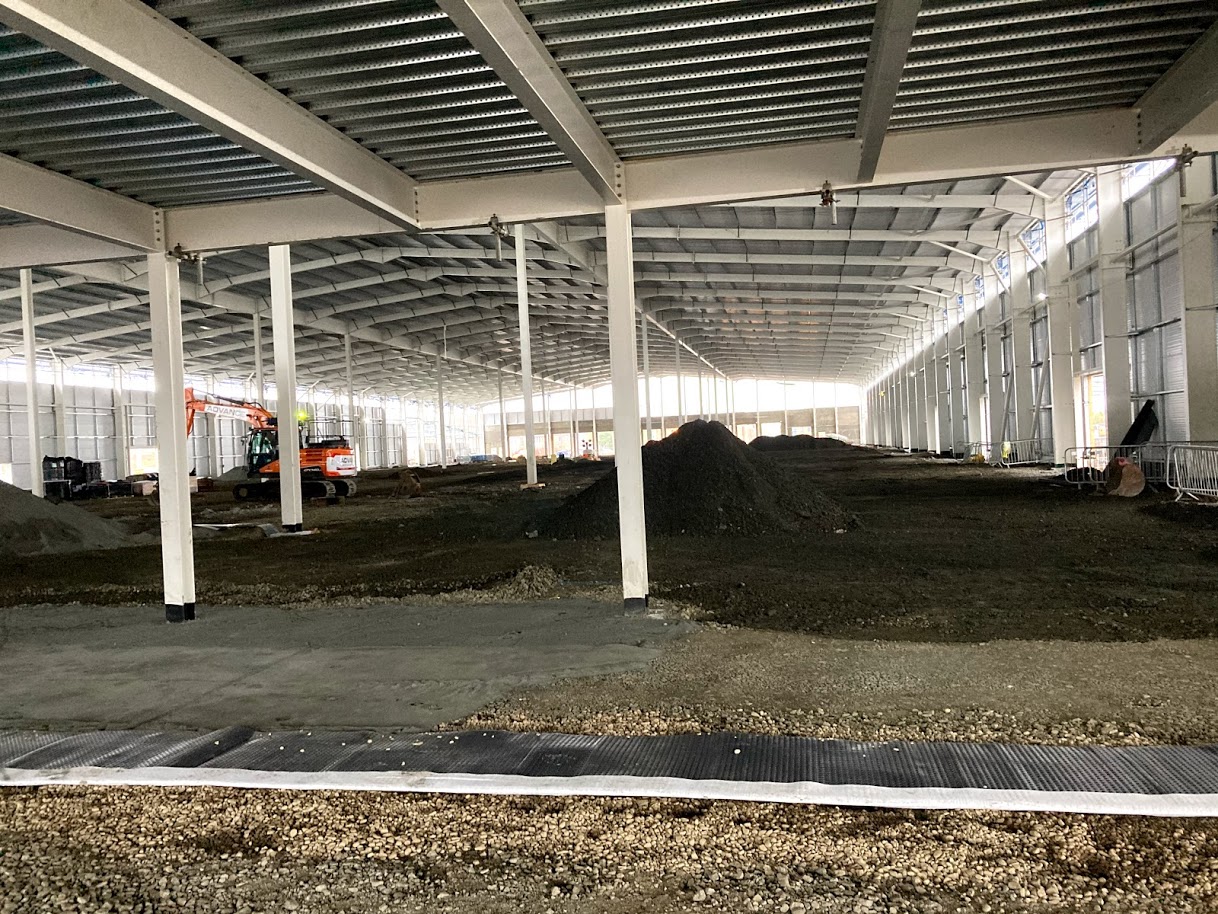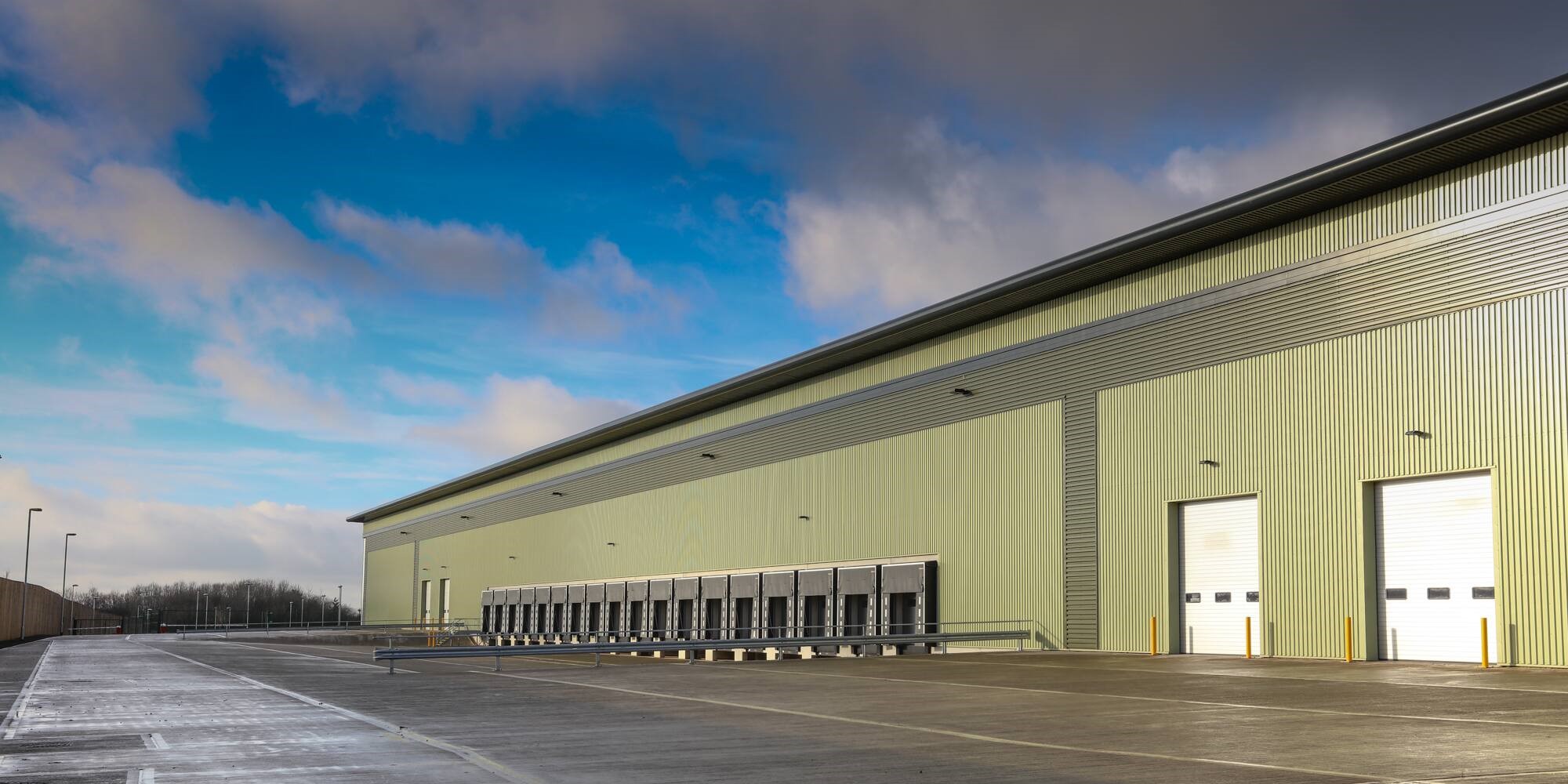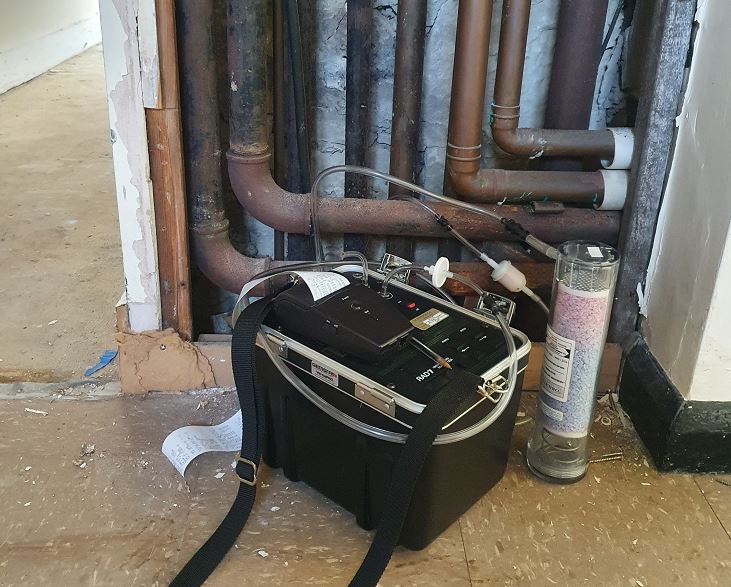Why are we thinking about warehousing?
Recently we’ve watched with interest as a new phenomenon in building construction has steadily grown in prevalence across the country. A new breed of warehouse has emerged which presents unique opportunities and challenges for the world of ground gas.
We’re calling it ‘The Rise of the Mega-Warehouse’.
Over the last six years, the number of warehouse units in the UK has increased by 32%. But these are not warehouses as we used to know them. The modern Mega-Warehouse is an altogether different beast. What we once considered to be simply ‘large sheds’, are now sophisticated, highly engineered structures with demanding specifications.
With an average size of 340,000 square feet, the Mega-Warehouse has a huge footprint and so requires significant space to build. Huge floor plans, 24/7 operation, high stacked-storage systems, fork-lifts and robotic systems all have significant implications for good ground gas risk assessment and designing suitable protection measures.
And that’s what we’re going to dig into in this blog.
What’s driving this trend?
It probably won’t surprise you to know that this arrival of the new Mega-Warehouse is primarily driven by the massive expansion of on-line shopping.
Even before the pandemic, the trend of people increasingly turning to on-line retail was evident. The pandemic has only accelerated this change in shopping habits.
Recent research, commissioned by the UK Warehousing Association, indicates that every £1billion of extra online spend creates a need for an additional 775,000 square feet of warehousing space. And, over the last six years online retailers have increased their warehousing occupancy levels by a staggering 614%.


And this trend isn’t going to change any time soon. Research by Forrester predicts that online retail will account for 35% of all retail by 2025. This means the UK will need an additional 64 million square feet of additional warehousing. This equates to another 188 Mega-Warehouses based on the current average size.
But what does all this mean for ground gas risk assessment and protection systems?
The challenges
Site selection
This accelerated move to on-line shopping has resulted in a significant shortage of warehousing space. Specifically, there is a shortage of the 1million square foot plus units. The retail industry increasingly needs these Mega-Warehouses due to the increasing number of outsourced third party logistics providers.
But where are developers building these Mega-Warehouses to meet this demand?
Given the large footprint and logistical needs, developers determine Mega-Warehouse location primarily based on location, land value and proximity to the national motorway network. Frequently this means ‘marginal land’, with Government encouraging developers to re-use widely available derelict brownfield sites to help deliver the ‘build back better’ vision.
However, these locations tend to have a history of industrial use and contamination issues. And many of the brownfield sites large enough to accommodate a Mega-Warehouse are ones that have been left untouched for decades. They have remained un-redeveloped because they have the most complex issues and have been the most difficult to deal with.
This makes these sites much more challenging from a ground gas protection systems design perspective. Overcoming these complexities to get ground gas protection right for these buildings will be difficult.


Foundation and contamination issues
High-stacked storage systems serviced by specialised fork-lifts or robotic systems require exceptional settlement tolerances and comprehensive foundations. The large floor spans require robust ground-gas protection systems.
These Mega-warehouses are likely to require more than simple ‘dilute and disperse’. Developers may need to consider, instead, active systems fail-safe technologies as a better approach. For example, positive pressurisation.
Careful thought needs to be given to the design of these systems.
Reliability and construction standards
Given the scale and complexity of the new Mega-Warehouse, with their round the clock operation and supply chain liabilities, operators demand total reliability. They want the highest standards of construction and quality assurance. From a ground gas perspective this can only be achieved from an accurate risk assessment and well-designed protection measures.
Limited awareness of implications
Historically, the construction industry has had limited awareness and understanding of ground gas hazards, risks and protection systems. The resulting issues are likely to be further accentuated by the scale and demands of these new buildings.
It’s unlikely that the construction industry will fully grasp the implications on ground gas protection of the specifications of the new Mega-Warehouse. It’s our job as experts to take this as an opportunity to educate and improve awareness of ground gas in the construction industry.
The opportunities
However, these Mega-Warehouses and the challenges they create, also provide potential opportunities to drive forward improvements in ground gas protection systems.
Improving awareness
By getting involved at the early stages of the Mega-Warehouse revolution, ground gas experts can educate the construction industry. We can help developers carry out good ground gas risk assessment, inform design of robust gas protection systems and implement system performance monitoring and adaptation.


Unlocking problem sites
It offers a great opportunity to unlock the potential of large, derelict tracts of land with a problematic industrial legacy. With the right ground gas monitoring, risk assessment and protection measures the rehabilitation of these long-abandoned sites could be a significant win for society.
Improved warehousing stock
If developers get this right, it means this newest stock of warehousing will be built to the highest standards with the most appropriate gas protection systems in place. This offers sustainability benefits as high quality constructions reduces waste and will last the test of time.
Looking to the future
These Mega-Warehouses certainly present considerable challenges. However, we believe if they are built to the highest standards, with good ground gas monitoring, risk assessment and protection system design, they could offer a unique opportunity to improve our warehousing stock.
At GGS we believe in the old adage of ‘do it once and do it right’. It seems to us that this is particularly appropriate to remember as we watch the ‘rise of the Mega-Warehouse’.
The following pages include news articles, videos, guidance notes and white papers on a range of ground gas related topics which we hope you will find of interest. Please browse through but if you can’t find something on your particular issue of interest, we’d be very pleased to hear from you so we can put that right.


In this webinar you can learn lots about Radon, from understanding the basic science behind this ground gas and monitoring it, through to risk assessment and mitigation. Catch up on our latest webinar here.





